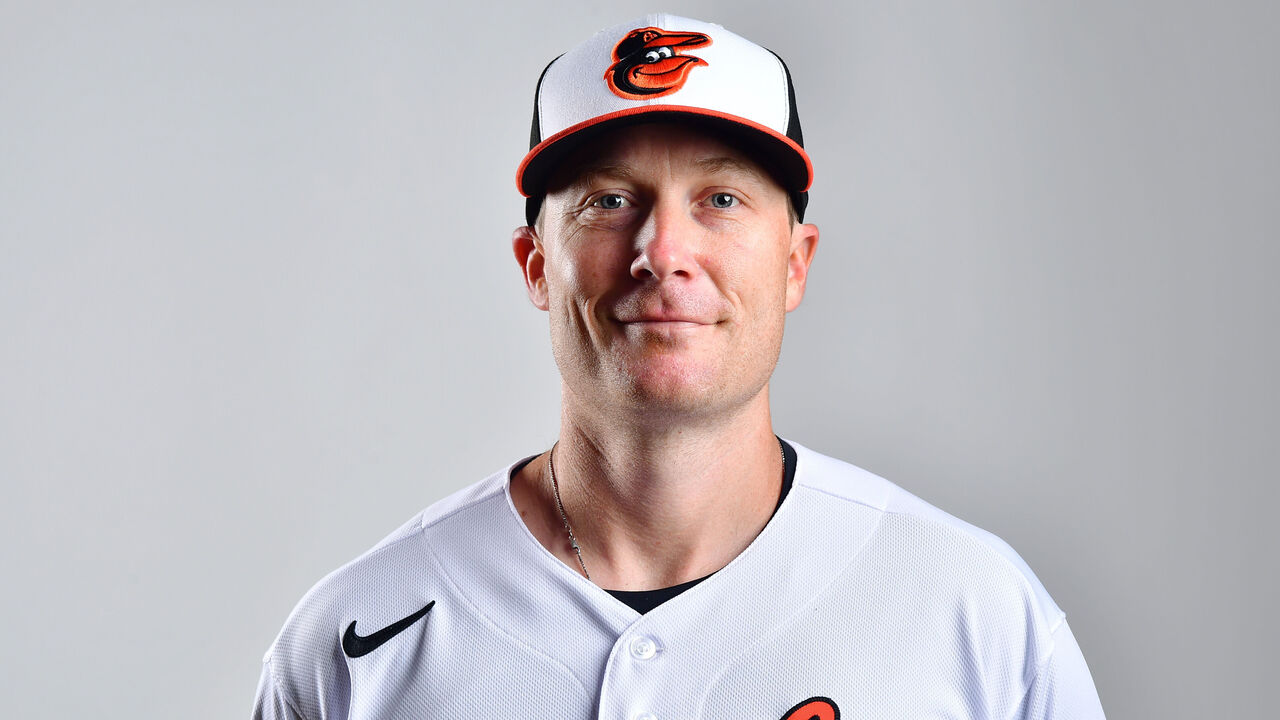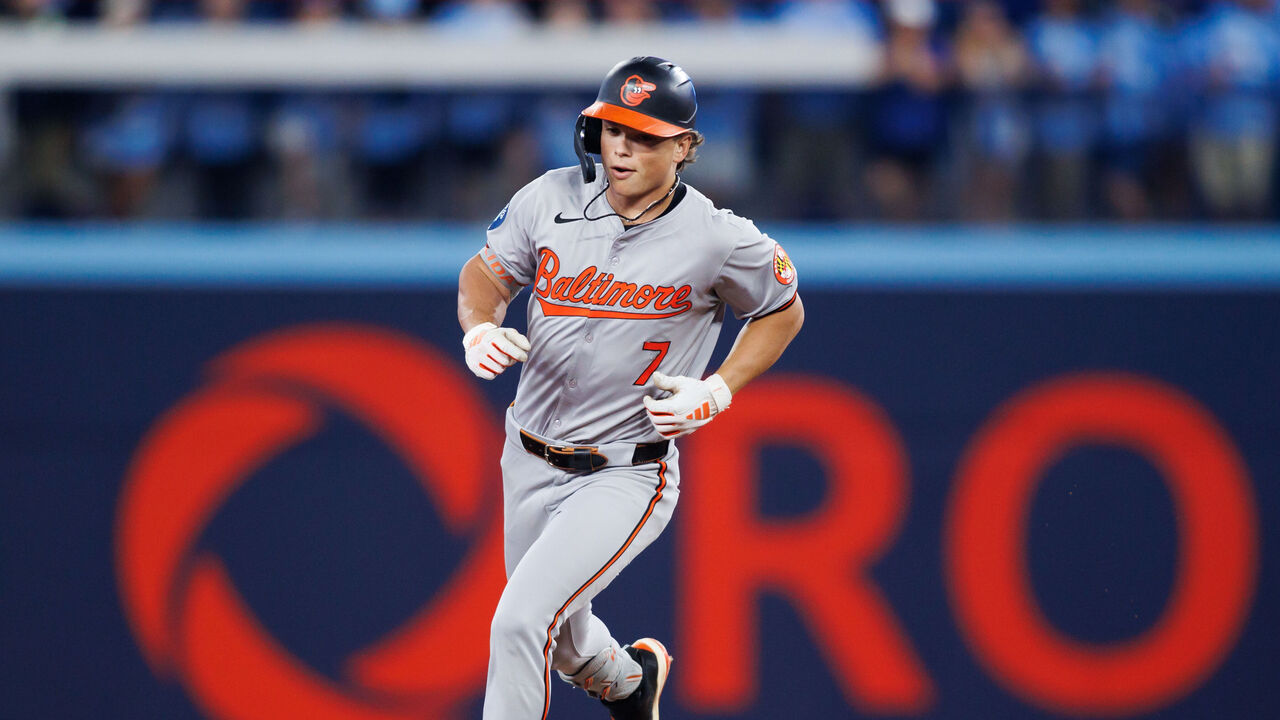Growing gap between majors and minors makes graduating hitters harder
There's increased talk among big-league players, executives, and coaches about a growing gulf between the minors and majors, especially for hitting prospects making the leap.
With so many young hitters struggling early in their major-league careers in recent years, are the upper levels of the minors losing some ability to prepare hitters? Why is making the leap seemingly more difficult today?
Consider the case of Jackson Holliday, Baseball America's No. 1 prospect, who was so overmatched when he made his major-league debut in April, the Orioles demoted him two weeks later. In 36 plate appearances, Holliday had two hits, two walks, and struck out 28 times. Another top prospect, Coby Mayo, is 0-for-17 with 10 strikeouts to begin his MLB career.
This is not just a problem for the Orioles, who have a solid track record for player development under general manager Mike Elias' regime.
The Guardians returned Kyle Manzardo, another top-100 prospect, to the minors after he struggled in a 30-game debut in May and June. Spencer Torkelson, uneven in his first two seasons with the Tigers, was so poor early this season that they demoted him to the minors in early June. The No. 1 pick of the 2020 draft hasn't returned. The Cardinals recalled their top prospect, Jordan Walker, this week for his third attempt to stick at MLB level.
They are just some of the cases in recent years.
Orioles hitting coach and strategist Cody Asche, a former major-league third baseman, said he believes it's more difficult than ever to break into the big leagues because the pitching talent and depth is better than ever.
"Organizations understand pitch quality way, way better," Asche said. "They have pitch-grade models, they know what quality stuff is. I think in years past, it was, 'He needs to prove it against Triple-A guys.' Today, if stuff is grading out as big-league quality, it is, 'Bring him up and see what he's got.' In years past, they would get more seasoning.
"Guys come up faster because we understand evaluations better."

The divide seems to be growing. But can we quantify that?
Using weighted runs created plus (wRC+), which attempts to adjust overall offensive performance based on ballpark factors and era, recent seasons aren't outliers for poor rookie hitting performance in the majors. The freshest faces are almost always below league average.
This year, rookies have posted an 87 wRC+, which is 13 percentage points below MLB-average production. While poor, that's within a normal range.
The best mark rookies recorded over the last 20 years was 94 wRC+ in 2015. The poorest mark was 82 wRC+, recorded in the 2008, 2013, and 2014 seasons.
FanGraphs doesn't track league-wide wRC+ in the minors, but the gap between OPS in Triple-A (via Baseball Reference) and that of major-league rookies is growing.
Triple-A OPS is 100 points less than that of major-league rookies in the last two seasons, the first 100-point gap going back to 2010. Triple-A OPS is also at its lowest level against overall major-league OPS in the last three seasons - between 62 and 69 points lower.
Holliday said he believes the gap is considerable and that minor-league talent isn't necessarily the best at its top level.
"I think Double-A might have better arms and more talented stuff than Triple-A," Holliday said.
Interestingly, a greater age gap has emerged in the minors since MLB consolidated it in 2021 and eliminated 42 minor-league teams.
Consider that batters and pitchers were about the same age in Triple-A in 2010 (batters averaged 26.9 years, pitchers 26.8 years) and that this was also true in 2019 (batters averaged 26.3 years, pitchers 26.5 years).
But in the four years since minor-league play resumed, pitchers have been at least half a year older on average (0.6 years in 2021 and 2022, 0.8 in 2023 and 2024).
Moreover, some teams are more aggressively promoting their best young hitters.
While pitchers' ages in Double-A have remained about constant since 2013, the average age of Double-A hitters has dropped. Eastern League hitters have averaged below 24 years old since 2021; Southern League hitters have averaged under 24 for the last two seasons. Only the Texas League average has remained above 24.
As Asche noted, teams are promoting promising arms to the majors sooner - why waste their bullets in the minors? - which leaves top hitting prospects facing a depleted supply of quality arms in the minors. They then arrive in the majors with less experience against quality opposition.

Asche says it's especially true of left-handed pitchers.
A left-handed batter like Holliday might not see many lefties during a typical week in the minors, but each MLB bullpen features left-handed specialists, in addition to a lefty or two in the rotation.
Pirates hitting coach Andy Haines, who's working with a number of young hitters in Pittsburgh, believes the leap is more difficult for another data-based reason: scouting.
"The game is more sophisticated than it's ever been," Haines said. "I was around (former pitcher John) Lackey quite a bit in Chicago. He'd say, 'When I want that scouting report, I will tell you. Until then, I'm going to do what I do.' Those days are gone. They are pummeling your weakness from pitch No. 1. There is an infrastructure of game-planning against you from shapes, speeds, and the defense right now. It's very difficult."
Holliday said it seemed like major-league pitchers knew his weaknesses immediately, and they attacked them relentlessly.
In his first two weeks in the majors, Holliday saw 73 fastballs, swung 32 times, whiffed 19 times, and produced only one hit on those swings.
That's a 59% whiff rate against fastballs. The MLB average whiff rate is 21.7% against four-seamers and 13.8% against two-seamers.
"I was missing fastballs up," Holliday said. "If you're underneath it, you have no chance."
Of course, Holliday is evidence that a tough start can just be a bump in the road.
Holliday got back on track after returning to Triple-A to work on his performance against elevated fastballs. He's hit well since his return to Baltimore.
The jump to the major leagues has never been easy. Perhaps it's more difficult than ever. But the best hitters will adapt and survive as always.
Travis Sawchik is theScore's senior baseball writer.
HEADLINES
- Blue Jays' Springer avoids major injury after taking knee to neck
- Watch: Tarik Skubal is flirting with history
- MLB Power Rankings: Picking 1 All-Star representative for each team
- Guerrero's hit leads Blue Jays past Yankees to open huge series
- Reds' Burns roughed up in 2nd career start after memorable debut